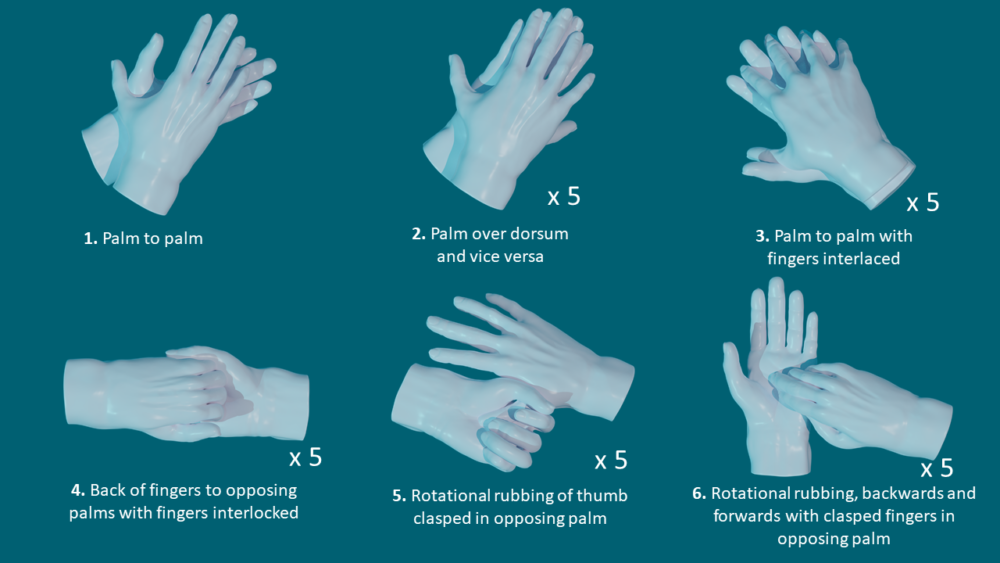The EN 1500:2013 and EN 1499:2013 standards are crucial European benchmarks in evaluating the efficacy of hand hygiene products. These standards were developed to ensure that products used for hand washing and disinfection are effective in reducing microorganisms, which is vital for preventing infections, especially in critical environments such as hospitals and clinics.
Th e primary goal of both standards is to assess the bactericidal efficacy of products intended for hand hygiene. Using a test method that simulates practical conditions, it is determined whether the products can significantly reduce the transient microbial flora on hands. For this, Escherichia coli K12, a non-pathogenic strain of E. coli, is employed as the test microorganism. This microorganism is internationally recognized for its safety and suitability for microbiological testing.
e primary goal of both standards is to assess the bactericidal efficacy of products intended for hand hygiene. Using a test method that simulates practical conditions, it is determined whether the products can significantly reduce the transient microbial flora on hands. For this, Escherichia coli K12, a non-pathogenic strain of E. coli, is employed as the test microorganism. This microorganism is internationally recognized for its safety and suitability for microbiological testing.
Both EN 1500 and EN 1499 require the validation of an appropriate neutralizer to ensure that the test results are not influenced by the residual activity of the product. This validation process is essential to guarantee the accuracy and reliability of the results obtained. Additionally, both standards follow a rigorous experimental design that includes a specific number of volunteers to ensure that the results are statistically significant.
A common feature in both standards is the sequence of hand movements that volunteers must follow during the tests. These movements are designed to ensure complete coverage of the hands with the product being tested, which is crucial for accurately evaluating its efficacy. The sequence includes detailed steps such as rubbing the palm of one hand against the back of the other and vice versa, rubbing interlaced fingers, and making circular movements on the fingertips. This standardized methodology helps achieve consistent and reproducible results.
Type of Product Evaluated for Hand Hygiene
The most notable difference between the EN 1500 and EN 1499 standards lies in the type of product each evaluates. The EN 1500 standard is designed to assess hand rub products, such as alcohol-based gels, which do not require rinsing. These products are especially useful in situations where water is not available, providing a convenient and quick option for hand disinfection.
In contrast, the EN 1499 standard focuses on products for hygienic hand washing, such as liquid disinfectant soaps, which require rinsing with water. These products are suitable for situations where water is available, and a complete hand wash is needed. The evaluation of these products includes a washing procedure that ensures the adequate removal of microorganisms using water and soap.
Test Procedure on the Hand Hygiene products assessed
The test procedures differ significantly between the two standards due to the differences in the types of products evaluated. In the EN 1500 standard, the hand rub procedure involves the application and rubbing of the product without rinsing. This method is compared to a reference treatment using a standard 60% propan-2-ol solution. The procedure includes rubbing the hands for a specific time recommended by the manufacturer, usually between 30 and 60 seconds. The efficacy of the product is measured in terms of the logarithmic reduction of E. coli compared to the reduction achieved by the reference solution.
In contrast, the procedure in the EN 1499 standard involves washing with water and soap, followed by rinsing. The efficacy of the test product is compared to a standard hand wash using non-medicated Linseed liquid soft soap.
SHAPYPRO manufactures soft soap diluted used for the preparation of the volunteer’s hands. As well as the one used for the procedure for Hygienic handwash reference (RP) for the EN 1499 standard.

This hygienic hand washing procedure is designed to ensure that all areas of the hands are adequately treated. The contact time with the soap and water, as well as the washing technique, are strictly controlled to ensure precise results. The hand washing is carried out according to a standardized procedure that includes specific movements to cover all surfaces of the hands, from the palms to the fingers and wrists.
Contact Time Requirements
Another key difference between the two standards is the required contact time for the products. In the EN 1500 standard, the contact time is generally shorter and varies according to the manufacturer’s recommendation, typically between 30 and 60 seconds without rinsing. This short time reflects the nature of hand rub products, which are designed to be quick and effective without the need for water. These products are ideal for environments where speed and convenience are crucial, such as in medical emergencies or areas without access to water.
Conversely, in the EN 1499 standard, the washing time is set at 60 seconds, followed by a 10-second rinse. This longer time reflects the need for a thorough and exhaustive wash to ensure the adequate removal of microorganisms. The washing procedure includes specific steps that ensure all hand surfaces are exposed to the soap and water for sufficient time to achieve effective disinfection. This approach is essential in environments where a high level of hygiene is required, such as hospitals and clinics.
Quality Control and Validation in Hand Hygiene Products
Both standards emphasize the importance of procedure validation and quality control of the products used. EN 1499 includes quality control of the diluted soft soap, ensuring that it meets purity and efficacy criteria. Specifically, the soap must meet requirements for purity, identity, and absence of substances insoluble in ethanol. Additionally, tests are conducted to determine the fatty acid content and loss on drying.
Procedure validation in EN 1499 involves verification of the neutralizer to ensure it does not interfere with the antimicrobial activity of the product. A neutralizer control is conducted to verify its absence of toxicity, and a method validation is performed to guarantee the accuracy of the test results.
EN 1500 focuses on the validation of hand rub products, ensuring that the neutralizers used do not affect the test results. Specific methods are described for the control and validation of the neutralizer, like those in EN 1499, to ensure it does not interfere with hand rub products.
Expected results of the tested Hand Hygiene product
The expected results and evaluation criteria also differ between the two standards. In the EN 1500 standard, the efficacy of the product is measured in terms of the logarithmic reduction of microorganisms compared to the reduction achieved with 60% propan-2-ol. This provides a clear and quantifiable reference standard for evaluating the efficacy of hand rub products. The results must demonstrate that the test product is at least as effective as the reference solution to be considered suitable for hand disinfection.
In the EN 1499 standard, efficacy is measured in terms of the logarithmic reduction of microorganisms compared to the reduction achieved with a standard soap wash. This approach ensures that hand wash products are at least as effective as a basic soap wash. The results must show a significant reduction of E. coli on the volunteers’ hands after washing for the product to be considered effective. This criterion ensures that products used in hygienic hand washing can provide a high level of disinfection necessary in environments where hygiene is critical.
Conclusion
In summary, although the EN 1500 and EN 1499 standards share the common goal of evaluating the efficacy of hand hygiene products and use similar methods and criteria in several aspects, they apply to different types of products and employ specific procedures adapted to the characteristics of these products. The EN 1500 standard focuses on hand rub products, while the EN 1499 standard centers on hand wash products. These differences reflect the distinct needs and practical applications of hand hygiene products, ensuring that all of them are rigorously evaluated to guarantee their efficacy in reducing microorganisms and preventing infections.
Both standards are essential for maintaining high hygiene standards in environments where disinfection is crucial. By adhering to these standards, manufacturers can ensure that their products meet the necessary requirements to provide effective protection against the spread of infections. Healthcare professionals and other users can trust that products complying with these standards have been rigorously tested and are effective in maintaining hand hygiene in critical situations.
Summary Table
| Characteristic | EN 1500 | EN 1499 |
| Objective | Evaluate bactericidal efficacy of hand hygiene products | |
| Test microorganism | Escherichia coli K12 | |
| Neutralizer validation | Requires validation of an appropriate neutralizer | |
| Experimental design | Includes a specific number of volunteers to ensure statistically significant results | |
| Hand movement sequence | Standardized movements to ensure complete product coverage | |
| Type of product evaluated | Hand rub products (alcohol-based gels) | Hygienic hand wash products (liquid disinfectant soaps) |
| Test procedure | Application and rubbing of the product without rinsing | Washing with water and soap followed by rinsing |
| Contact time | 30-60 seconds without rinsing | 60 seconds of washing followed by 10 seconds of rinsing |
| Expected results | Logarithmic reduction compared to 60% propan-2-ol | Logarithmic reduction compared to a standard soap wash |
Both standards are essential for maintaining high hygiene standards in environments where disinfection is crucial. By adhering to these standards, manufacturers can ensure that their products meet the necessary requirements to provide effective protection against the spread of infections. Healthcare professionals and other users can trust that products complying with these standards have been rigorously tested and are effective in maintaining hand hygiene in critical situations.
Why choose SHAPYPRO proficiency testing?
With over 10 years’ experience in assessing the efficacy of disinfectant products, we offer a proficiency testing programs ISO/IEC 17043 accredited under EN 14885:2022/AC:2023 requirements.
We have previously developed both EN 1500 and EN 1499 suitability test programmes.
We are manufacturer of the diluted soft soap required for both developments.
The breadth of our knowledge allows us to assist clients with new method development and R&D projects.
We offer a tailor-made ring trial.
Our data science manager is over the world well-know
Tests are performed following international validated standards and guidance.



